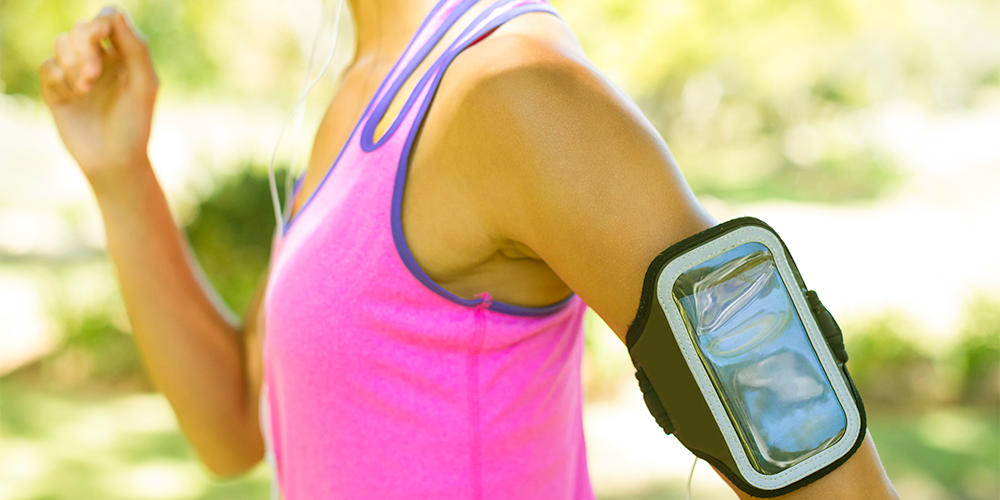Running is a sport that has become increasingly popular over the years. It is one of the most accessible disciplines and one of the most comfortable and simple forms of aerobic exercise that exist. You can practise it almost anywhere, just lace up your running shoes and get out of the house.
However, to get the most out of running, technology can be a great help. There are several devices that enhance the running experience: thanks to wearable technologies, we can track our trainings, analyse data, check our values in real time and much more. Let’s discover in this article 4 gadgets that are useful for the development of running performance.
1. Heart rate monitor
Measuring the heart rate is useful to monitor the intensity level and avoid overloading the heart. When we run, the heart rate increases because the heart works harder to pump oxygen-rich blood to the muscles. The heart rate monitor allows you to monitor your heart rate and assess your effort during exercise.
It is also a useful tool for finding the right training zone and working more precisely in the correct zone. The heart rate monitor is used more in easy runs than in intervals. This is because the heart rate does not increase instantly when the speed increases, but it takes almost thirty seconds for the heart to stabilize at the new rate. It can also be utilized to calculate recovery between intervals: it verifies that the heart rate has fallen before starting the next sprint, instead of waiting until a few minutes have passed.
These monitors come in different forms. The most popular and reliable is the heart rate monitor with chest strap. However, most GPS watches (but also smartphones and fitness trackers) have one built in.
How to use in running.COACH
running.COACH gives you the appropriate intensity for each workout. One of the ways in which this is displayed is the heart rate. The most common devices can be connected directly to running.COACH and the data can thus be transferred to the training plan without any manual intervention. The uploaded data in turn has a positive effect on the dynamics of the training. The same as for heart rate, in relation to running.COACH, also applies to pace measurement – this is described in more detail in the next point.
2. GPS watches
GPS watches are becoming progressively more advanced from year to year. They combine the functions of other devices in a single watch, such as measuring heart rate (most watches are equipped with a heart rate monitor that reads the frequency through the wrist, although the chest strap is more accurate), or the functions of pedometers/fitness trackers (counting steps, measuring sleep, determining calories burned…).
GPS technology also allows you to track distance, route, pace and time. You can listen to music or check the weather. Some more sophisticated watches offer advanced evaluations such as calculating ground contact time, stride length, and estimating the recovery time required.
All these data and measurements are used to assess your progress on a daily basis. Setting goals and achieving them creates a feeling of satisfaction and motivation. Whether you are an amateur jogger or a professional athlete, tracking your performance is now a must.
3. Running apps
There are numerous running apps that, once installed on your Smartphone, can cover similar functions as Smartwatches. running.COACH, for example, offers training plans for every level, can connect to GPS watches, and adapts according to your progress (you can test 14 days for free).
You can also download virtual running apps such as Virace. Learn more about our virtual racing platform in this article.
4. Headphones
Listening to music while running is a popular practice. It makes time go by faster, motivates and spurs you on, increases your performance and keeps your head busy. It doesn’t have to be only music: you can also listen to a podcast, or the inspiring voice of your trainer.
Wireless headphones are the most popular nowadays. You can connect them to your phone or smartwatch without the hindrance of wires. Connecting your GPS watch to your headphones is very useful if you want to avoid carrying your phone around with you (in this case, it is handy to have an armband or running belt). There are also headsets specifically designed for running.
With viRACE, headphones can be used to receive the run-specific information and intermediate results live to the ears during the execution of a virtual run.
However, there are several ‘purists’ who can’t concentrate and do their best with music, and prefer to listen to their breathing or the sounds of nature around them.
Conclusion
Running is a highly valued and practiced sport, and many runners use wearable technology to improve their performance. By incorporating these devices into your routine, you can keep your motivation high, measure your progress and make the most of your running experience.
Different categories of runners will use technologies for different purposes. But as a general rule, the main goal is to evaluate performance, track training and compare results to reach your goal. Performance metrics become a driving force in the runner’s experience.

Image source: Exploring Experience of Runners with Sports Tracking Technology, Armağan Kuru
https://www.academia.edu/27259057/Exploring_Experience_of_Runners_with_Sports_Tracking_Technology

